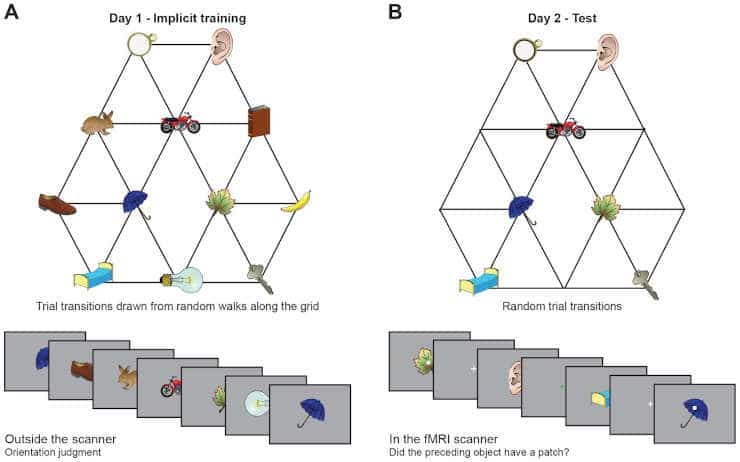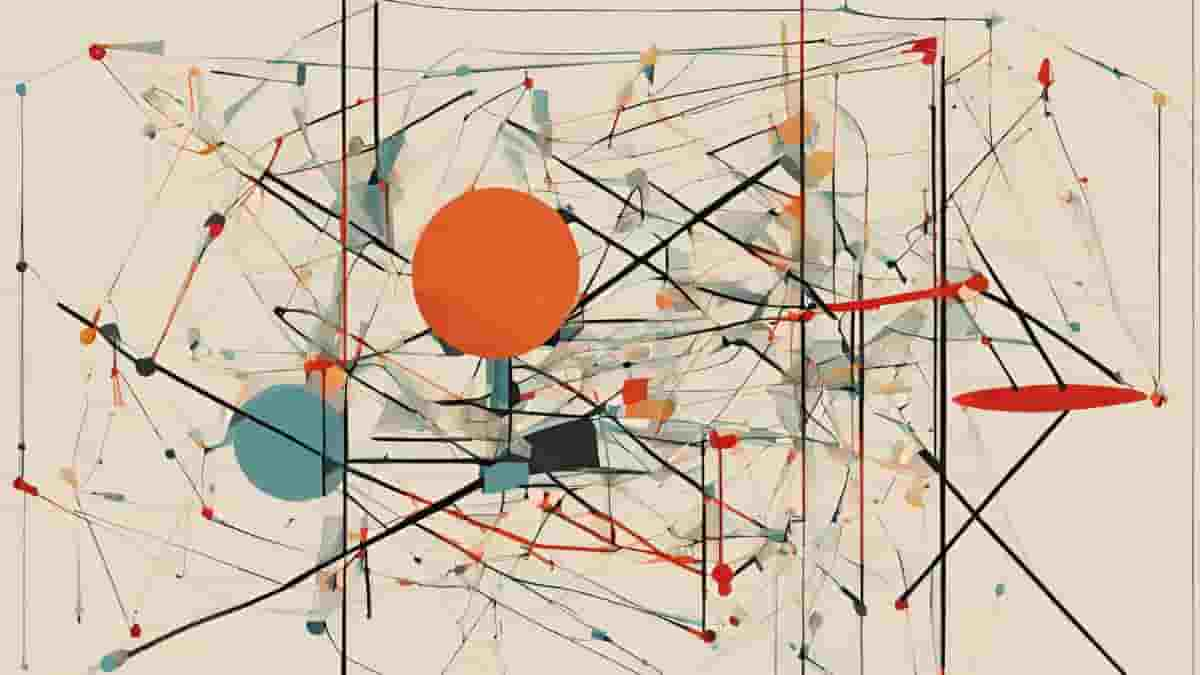To help us navigate, the brain encodes information about the positions of landmarks in space in a series of maps. These maps are housed by two neighbouring brain regions called the hippocampus and entorhinal cortex.
These regions also encode information about non-spatial relationships, for example, between two events that often occur close together in time. However, it was not known whether such non-spatial relationships may also be encoded as a map.
Mona M Garvert, of University College London and University of Oxford, along with Raymond J Dolan Timothy and EJ Behrens, addressed this question by showing 23 volunteers a series of objects on a screen. Unbeknown to the volunteers, the order of the objects was not entirely random.
Instead, each object could only follow certain others. The objects were thus connected to one another by a network of non-spatial relationships, broadly comparable to the spatial relationships that connect physical locations in the environment.
Abstract Relational Maps
The next day, the volunteers viewed some of the objects again, this time while lying inside a functional magnetic resonance imaging scanner. Although the volunteers still believed that the objects had been presented at random, the activity of their hippocampus and entorhinal cortex reflected the non-spatial relationships volunteers had experienced between the objects. The relationships were organized in an abstract map.

(A) Graph structure used to generate stimulus sequences on day 1. Trial transitions were drawn from random walks along the graph.
(B) Objects on reduced graph presented to subjects in the scanner on day 2. Trial transitions were random. In both sessions, participants performed simple behavioural cover tasks.
DOI: http://dx.doi.org/10.7554/eLife.17086.003
Notably, the measure that best predicted a behavioral signature of implicit knowledge and blood oxygen level-dependent adaptation was a weighted sum of future states, akin to the successor representation that has been proposed to account for place and grid-cell firing patterns.
The results suggest that the brain organizes knowledge about abstract non-spatial relationships into maps comparable to those used to represent spatial relationships. The brain can use these maps of non-spatial relationships to guide our behavior, even though we have no conscious awareness of the information they contain.
The maps may also enable us to make new inferences, just as we can use our spatial maps to find shortcuts or navigate around obstacles. Future studies should investigate the mechanisms underlying our ability to create maps of non-spatial relationships and how we use them to guide decision-making.
The work was supported by the Wellcome Trust, the Joint Initiative on Computational Psychiatry and Ageing Research between the Max Planck Society and University College London (RJD), and the James S McDonnell Foundation.
Reference:
- Mona M Garvert Raymond J Dolan Timothy EJ Behrens. A map of abstract relational knowledge in the human hippocampal–entorhinal cortex. eLife 2017;6:e17086
© 2017 eLife Sciences Publications Ltd. Republished under Creative Commons Attribution license.
Last Updated on November 25, 2023
